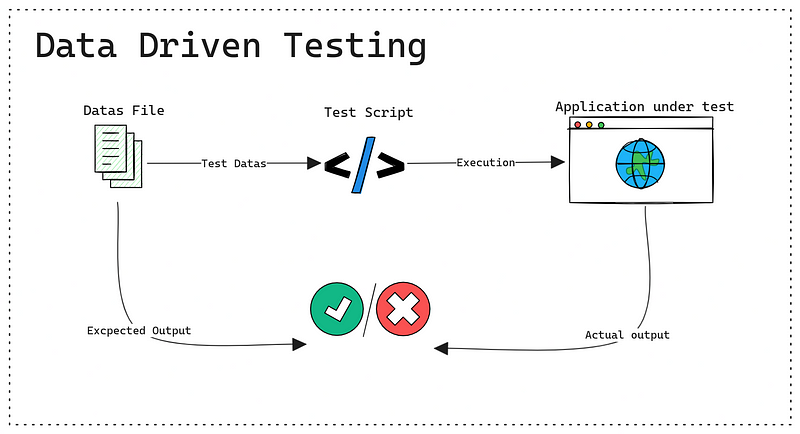Architecture Patterns : Data-Driven Testing
DDT (Data Driven Testing) enhances testing efficiency by automating with external data, offering broad coverage while needing initial setup.
Join the DZone community and get the full member experience.
Join For FreeWhat Is Data-Driven Testing?
Data Driven Testing is a concept in software testing that emphasizes the separation of test data from the test logic or scripts. In this approach, test scripts are designed to read test parameters and input data from external sources like databases, XML files, Excel sheets, Json files, or CSV files. This design allows a single test script to execute tests for a vast array of data sets, improving test efficiency and coverage.
The significance of DDT lies in its ability to automate and streamline the testing process, particularly in scenarios where application behavior depends heavily on varied input data. This approach is essential in validating and verifying applications that handle extensive and diverse datasets.

Here you can find a webinar comparing two automation frameworks (Selenium and Karate) in which I propose two different implementations of Data Driven Testing:
Benefits
Comprehensive Test Coverage: DDT allows for the execution of test cases across a wide range of input scenarios, leading to thorough testing of application functionalities.
Maintainability and Scalability: Externalizing test data simplifies the process of updating tests for new data sets without modifying the test scripts, making the test process scalable and maintainable.
Error Reduction: Automating test cases reduces the risk of human error, especially in repetitive and extensive test scenarios.
Time and Cost Efficiency: Reusability of test scripts for different datasets saves significant time and effort, translating to cost savings in the long run. These are the most important benefits of DDT and often make it a “must-have” in automation projects.
Trade-Offs
Setup and Initial Investment: Setting up a DDT framework requires significant up-front effort in scripting and setting up data integrations. The choice of technology can also be important; if you watch the webinar, you will see that DDT implementations vary considerably from one technology to another, so this needs to be identified as a requirement early in the process.
Data Quality Dependency: The success of DDT hinges on the accuracy, relevance, and quality of external test data, this could mean involving the business in data generation.
Learning Curve: Implementing DDT requires a certain level of technical expertise in both testing and the specific technologies used for data handling.
Conclusion
In conclusion, Data Driven Testing stands as a critical enabler in the evolution of software testing paradigms. It addresses the complexities and dynamism of modern software applications by offering an adaptable, efficient, and comprehensive testing framework. As businesses and technologies evolve, demanding more data-intensive applications, DDT becomes increasingly relevant. Its integration into software development processes promises enhanced accuracy, efficiency, and scalability. However, successful deployment demands careful planning, ongoing management of test data quality, and an understanding of its operational intricacies. In essence, Data Driven Testing is not just a testing methodology; it is a strategic approach to ensuring software reliability and quality in an increasingly data-driven world.
Opinions expressed by DZone contributors are their own.

Comments